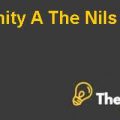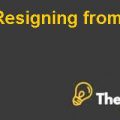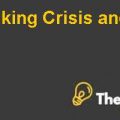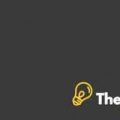
Question#1:
The newly hired Mars Program Director, Scott Hubbard has asked Gentry Lee, who is a former JPL employee to help him develop an architecture for the New Mars Program. Hubbard wants the architecture to include a risk management program that would reduce the down the failure rate of JPL’s mission. Lee agreed to Hubbard’s offer and accepted to work with him for establishing a risk management program.
Risk Review Board:
The risk review board consists of 12 individuals, chaired by Lee himself. The team consisted of experienced and respected technical experts from NASA Management. The members of the board were not dependent upon anyone and they were brought into the board based upon the increased knowledge and expertise they would add. The individuals served in the risk review board as per their positive contributions to the plan and mission success even without being directly involved with it.
A culture of intellectual confrontation was created during the time period of three critical review meetings. The engineers were asked fierce questions and they were challenged by the board upon their assumptions. The board played a very dominant role in these meetings as they asked the rationale of the assumptions made by the engineers. The board questioned the engineers upon their assumptions regarding, how would the mission work.
Usually people have bet their careers on the success of a mission and are more confident about the assumptions they have made regarding the parameters they need to keep in mind to while designing the program. Risk Review Board was an initiative that could ask about these assumptions and how logical it would be to pursue them. The board was empowered to ask about the failure rate that can occur to the program. The board wanted to make sure that the plan would still work out if the parameter change while the program is in the process. The board focused on acquiring people who were always asking questions regarding the possibilities of something going wrong, who had the confidence to speak out and challenge anything they see as a possible threat to the program.
A lot of questioning was done in these meetings and critical discussions would initiate any moment. These meetings gave the engineer a different perspective to their work and way they carry out assumptions.
The critical issues for the success of these meetings were very logical. The people employed in NASA have been top students in top universities. Their tendency to accept their wrongs was very low. In order to keep these meeting fruitful, the conversation had to start so that the discussions could get analytical. The acceptance of these individuals was very essential as they had to accept to the point of others after being questioned regarding their assumptions and parameter they thought were under control.
Question#2:
The risk management activities that PMBOK organized are well implicated. They followed the following steps while applying risk management processes.
- In the first step they defined the manner in which the risk management techniques would be conducted.
- In the second step they analyzed the factors which would increase the possible threat form the risk.
- The third step revolved around the idea of prioritizing risks and their impacts with time intervals.
- In this step the alternatives were generated for minimizing the possible harms and shifting to a viable option (if possible)
- In the last the risk response plans were implemented and residual risks were monitored along with the effects of the risk reduction plan being evaluated.
The risk reducing plan at MBE was casual and heavily depended upon free flowing of the information. The engineers were heavily questioned about their assumptions and predictions regarding the plan. The board directors were empowered to question until satisfied. The individual were motivated to think till the last second of how bad can things go and what actions must be taken or amendments that were necessary to be made for reducing the rate of failure. These free flowing ideas and questions motivated the individuals to ask and challenge anything they thought would have negative affects over the program. In these meetings, the risks were identified and analyzed and the alternatives were generated followed by the selection of the best available option........................
This is just a sample partial case solution. Please place the order on the website to order your own originally done case solution.











